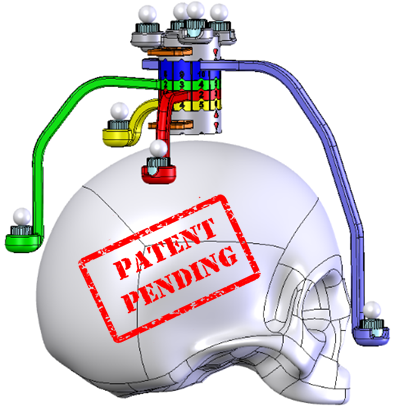The issue of “accuracy” in surgical navigation systems, which have been utilized since the late 1980s, particularly in neurosurgery, ENT, orthopedics, biopsy, interventional radiology, and various other surgical disciplines, has been completely resolved. The concept of “accuracy in surgical navigation,” which has been the subject of approximately 12,000 distinct research studies and scientific articles since its inception, is ushering in a new era in this field by completely eliminating this problem through a novel technique invented by Doctor Yusuf Özbek.
The primary objective of surgical navigation, particularly in minimally invasive surgical procedures conducted on any region of the body, is to align the patient’s preoperative radiological images (such as CT scans or MRIs) with the patient’s anatomy on the surgical site. This alignment, known as patient registration, provides the navigation of surgical instruments within the anatomy. The registration process serves as the fundamental functionality of the surgical navigation system, which relies on a specialized optical or electromagnetic tracking device and associated software. This technology enables the simultaneous tracking of surgical instruments used during the procedure within the anatomy, allowing the surgeon to accurately locate the intended intervention site. Real-time monitoring of the instrument’s position on a screen with minimal error or deviation is made possible, enabling the surgeon to guide the instrument towards the predetermined surgical target. Consequently, the operation can be safely performed without causing harm to critical or healthy structures within the surgical site.
The degree of accuracy deviation value, commonly referred to as targeting accuracy, is the paramount factor in surgical navigation. This value represents the degree of alignment between the tracked position of the surgical instrument within the operated anatomical region, as displayed on the monitor, and the actual anatomy of the patient. A higher targeting accuracy greatly increases the likelihood that the surgeon is effectively operating within the intended area and conducting a safe surgical procedure. Conversely, a lack of targeting accuracy can lead to adverse outcomes, including complications resulting from damage to critical or healthy structures, the inability to intervene, or incorrect interventions.
The main factor directly affecting the degree of accuracy is patient registration process, which usually takes place minutes before surgery. This is traditionally accomplished by placing three-dimensional virtual landmarks on patient images and touching the corresponding landmarks on the patient’s anatomy with the probe instrument tracked by the surgical navigation system. Using these two sets of points obtained from the patient and the images, the patient is registered with the images and the targeting accuracy is calculated in the computer environment.

The precise location and quantity of these points, as well as their distribution in relation to the surgical area, are the determining factors for accuracy in surgical navigation. Presently, there exist various patient registration techniques that have been developed to enhance accuracy. The accuracy margins achieved through these methods can range from 1 mm to several cm, depending on the used method and the surgical site. Furthermore, achieving accuracy below 2 mm is very limited and can only yield clinically satisfactory accuracy results in specific surgical areas of certain body parts.
The new patient registration method and device named “Noctopus”, developed by medical technology company MASURATION GmbH in Austria, guarantees surgical interventions with a remarkable accuracy of 0.2 mm, irrespective of the operation area and maximizes patient safety during computer assisted surgical procedures. The enhanced targeting accuracy provided by this method enables the performance of new minimally invasive operations that were previously hindered by issues of inaccuracy.
The new method possesses several key features that set it apart from other methods. Firstly, it has the capability to automatically determine the optimal configuration of registration points specific to the patient and surgical target, eliminating any potential user error in the registration process. Additionally, it provides a highly accurate correlation between virtual and real patient anatomy. Furthermore, it guarantees maximum targeting accuracy for single or multiple anatomical targets without the need for re-imaging the patient. The method also offers complete automation of patient registration and a unified decision-making mechanism for this process. In the preoperative phase, surgeons can assess the precision of the surgical navigation during the operation, allowing for better organization of the operation planning based on this information. Lastly, the method is compatible with all imaging methods and tracker systems.

